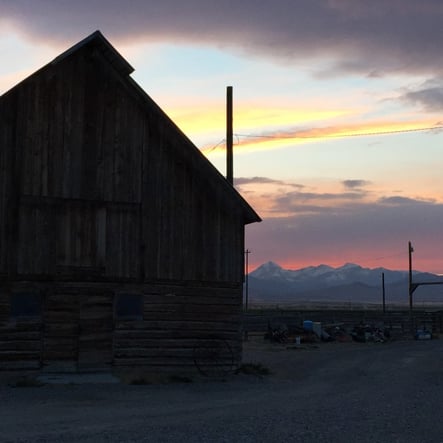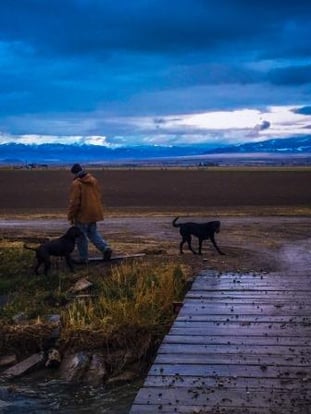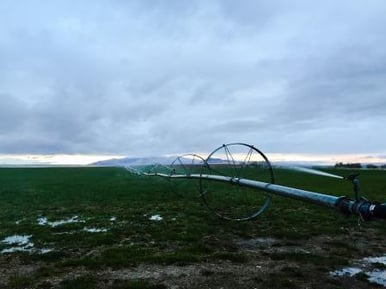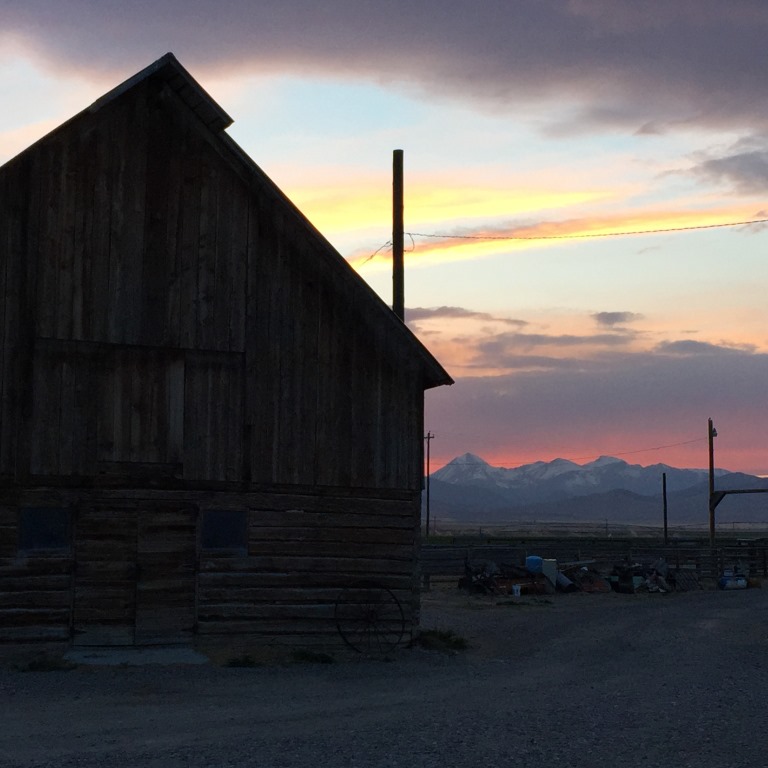 If life is comprised of cycles and seasons, these cycles are magnified on a farm. Over a year has passed since I began sharing experiences from our Montana grain farm.
If life is comprised of cycles and seasons, these cycles are magnified on a farm. Over a year has passed since I began sharing experiences from our Montana grain farm.
I started this blog series as we were planting our crops in the spring. Since then, I’ve written about haying and irrigation during the summer months, harvesting our crops in the fall, caring for our cattle throughout the winter and then welcoming calves in the early spring. As spring creeps towards another summer, we've turned the cattle out to pasture, we're again planting our crops and we end this series of blogs having come full cycle.
It's been a pleasure to share a snapshot of life on our Southwest Montana grain farm and as we conclude this series of blogs, I want to share some parting thoughts.
Always the Same; Always Changing
 The beauty of farming is the continuity of its cycles. During my lifetime, we will always plant our crops in the spring and harvest in the fall. We will always need the sunshine and the warmth of the earth to feed and nourish our crops. We will work with the tools and seasons Mother Nature gives us to grow crops and raise livestock that will feed both our family and yours.
The beauty of farming is the continuity of its cycles. During my lifetime, we will always plant our crops in the spring and harvest in the fall. We will always need the sunshine and the warmth of the earth to feed and nourish our crops. We will work with the tools and seasons Mother Nature gives us to grow crops and raise livestock that will feed both our family and yours.
We will also keep working to do things better. This means within the cycles and continuity we cling to, we will keep trying new practices and challenging our constraints. For example, we will plant new crops and plant things differently. This year we are experimenting with planting two crops in the same field simultaneously ─ a cover crop of hay barley and an under crop of alfalfa. This practice isn't new; but it's new to our farm.
Planting a nitrogen-fixing crop simultaneously with a grain has the potential to drastically reduce our need for synthetic fertilizers. Healthier soils mean healthier crops and feed for our livestock ─ and our families. We will continue to challenge convention in pursuit of the best soils and crops possible, working to balance change and continuity.
The Root of Farming is Love
 As I spent the last year interviewing and learning from my family about farming practices, one common theme resonated clear ─ their love for farming and ranching. Farming and ranching involve incredible amounts of ambiguity and stress. Because farmers and ranchers rely on Mother Nature to do the right thing at the right time, risk is enormous. As climate change amplifies, risk will amplify as well.
As I spent the last year interviewing and learning from my family about farming practices, one common theme resonated clear ─ their love for farming and ranching. Farming and ranching involve incredible amounts of ambiguity and stress. Because farmers and ranchers rely on Mother Nature to do the right thing at the right time, risk is enormous. As climate change amplifies, risk will amplify as well.
Why will family farmers continue on in this volatile business? Because they love to farm, they love their land, they love their animals and they love their lifestyle. Although I've been privy to it for years, this year I really observed my family and their love of what they do. From my husband's zeal to integrate technology into our farming techniques, to my father-in-law's ability to fix and engineer incredible solutions, to my mother-in-law's compassion as she bottle-feeds sick calves; they live the adage that farming is not an occupation ─ it's a lifestyle and a passion.
Get to Know a Farmer
 With the world population projected to reach 10 billion people by 2050,1 farming practices will continue to evolve. The work of Norman Borlaug's "Green Revolution" of the 1960's will continue and it may or may not be accompanied by a gene revolution.
With the world population projected to reach 10 billion people by 2050,1 farming practices will continue to evolve. The work of Norman Borlaug's "Green Revolution" of the 1960's will continue and it may or may not be accompanied by a gene revolution.
We are at a point where there is more ambiguity than ever about the future of farming, the seeds we will use and the practices we will have to implement. Through this ambiguity, one force will always shape farming ─ consumer demand. Good farmers will always farm with integrity; good consumers will demand food integrity.
If the dialogue between farmers and consumers stops or is blocked by middlemen, the whole system could be compromised. So, do your best to know where your food comes from and, even better, get to know a local farmer working to improve the food system. Whether it's at a local farmer's market or through your local university extension program, we need to maintain an ongoing dialogue between farmers and consumers if we want to provide our families with healthy food.

Wheat Grass Garden
If you've enjoyed our conversation about farming, consider becoming a farmer yourself. While the barriers to entry on a traditional farm can be high, you can easily make your own farm on your kitchen window sill!
Go visit your baker at your local Great Harvest Bread Company. Ask them for a handful of wheat berries that were grown on a Montana grain farm. Fill a pot or mason jar with potting soil and plant the berries about a quarter-inch deep. Keep your planter in sunlight and the soil moist.  Watch as the berries germinate and grow while your own little wheat field goes through the cycle of life. See what happens when you forget to water one day and your crop wilts ─ or when you over water and your crop yellows. Observe your wheat as it endures temperature fluctuations and stress.
Watch as the berries germinate and grow while your own little wheat field goes through the cycle of life. See what happens when you forget to water one day and your crop wilts ─ or when you over water and your crop yellows. Observe your wheat as it endures temperature fluctuations and stress.
Throughout it all, don't forget that you have a farmer friend in a Montana grain field who's feeling your pain . . . and your joy when it all works out.
Want to learn more about whole grains?
You may also be interested in these posts:
- Remembering the "Family" in Family Farm this New Year
- Farm-to-Fork: Natural Lamb with Red Wine Reduction Sauce
- Road Trip: Where it All Starts, With Montana's Wheat-Farming Families
- Farm to Table: My Own Vegetable Garden
1 United Nations Department of Economic and Social Affairs, "World population projected to reach 9.6 billion by 2050." Published 13 June 2013. Accessed 6/1/15 here.





